Less water doesn’t mean a boring garden. Here are 5 tips for a beautiful, dry climate garden that saves water.

Less water doesn’t mean a boring garden. Here are 5 tips for a beautiful, dry climate garden that saves water.

A few weeks ago, I had the opportunity to take another photo of a landscape I passed by in a neighborhood where I had just finished up a landscape consultation. I was shocked at the mushroom shaped shrubs.
Sadly, I often see examples of truly ‘interesting’ or should I say ‘bad’ pruning. I drove by this landscape and then made a U-turn so that I could take a quick photo…

Shrub pruning
I don’t know about you, but these Texas sage shrubs look like mushrooms, don’t you think?
Sadly, pruning these beautiful flowering shrubs this way robs them of their flowers, increases maintenance, creates dead wood, and shortens their life.
While there are quite a few shrubs that take well to repeated formal pruning – doing this to flowering shrubs should be avoided.
I must admit that I have seen Texas sage and other flowering shrubs pruned into many different shapes…
But, let me be frank – shrubs aren’t meant to be cupcakes, frisbees, or gumdrops
Here are just a few reasons why…
It removes the leaves needed for the shrub to make energy for itself
Excessive pruning actually makes your shrubs grow faster, which equals MORE maintenance
Shrubs pruned often require more water as they constantly work to replace foliage lost
Continued shearing will shorten the lifespan of your shrubs
Green ‘blobs’ are ugly compared to beautiful flowering shrubs
If you are tired of the time and money it takes to maintain flowering shrubs the ‘wrong’ way. I invite you to join me in my online shrub pruning workshop where I will teach you the right way to prune.
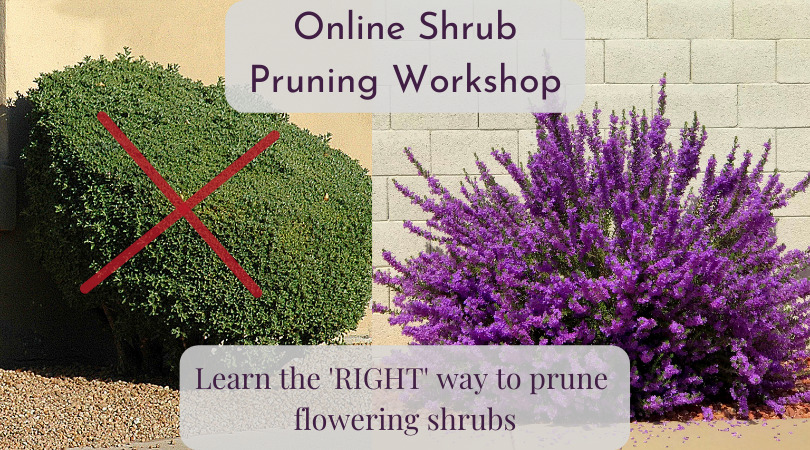
Imagine your outdoor space filled with beautiful, flowering shrubs instead of green ‘balls’. Believe it or not, the shrubs in the photo above are the SAME plant – they have just been maintained differently. The one on the left takes much more money and time and the other thrives with pruning once (or twice) a year.
In my online class, I show you how to work with your landscaper or how you can take care of your shrubs yourself. Got ‘green balls’ already in your landscape? I’ll teach you how to rejuvenate them and the best time of year to do it.
So, ditch the ‘green blobs’ in your yard and learn how to prune with confidence – it’s much easier than you think. Learn more here and what students have to say about the class.

Many of us are familiar with how over-pruning can take away much of the beauty of flowering shrubs and contribute to their early death.
But, have you ever wondered what they look like on the inside?
I found this ‘ugly’ example alongside the drive-thru of Taco Bell.

Over Pruned Shrubs
It isn’t pretty, is it?
The side of the ‘Green Cloud’ Texas Sage was sheared away because it was growing over the curb.
The result of planting the shrub too close, OR the wrong plant in the bad space.
You can see the thin layer of leaves that cover the shrub and the dark, interior where sunlight seldom reaches.
This isn’t healthy for your shrubs, shortens their lifespan, and increases the amount of water they require.
If this resembles your shrub(s), the good news is that you can often fix them.

Imagine going from the shrub on the left to the one on the right.
It is possible and often a specific type of pruning known as ‘rejuvenation pruning’ is the way to do this.
In my online shrub pruning workshop, I love teaching my students how to rejuvenate their over-pruned shrubs.
It’s important to note that not all shrubs respond to rejuvenation pruning, but Cassia (Senna species), Sage (Leucophyllum species), Ruellia, Fairy Duster (Calliandra species), and Lantana shrubs respond well as long as they aren’t too old and healthy.
I encourage you to declare your landscape free of shrubs pruned into balls, cupcakes, and squares and transform it into one filled with beauty 🙂

Last week, as my husband and I, were pulling out of our local Home Depot when I saw what looked like mini Christmas trees throughout the parking lot islands.

mini Christmas trees
I grabbed my cell phone and took a picture of these funny-shaped plants.
Do you want to know what they are?
No. They aren’t Christmas trees…
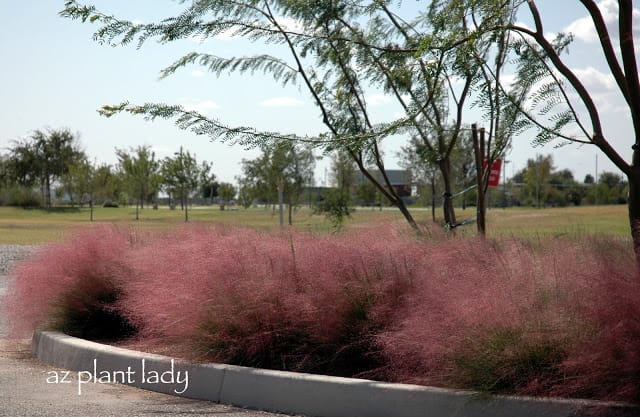
Those cone-shaped plants are in reality badly pruned Pink Muhly (Muhlenbergia capillaris) grasses.
These are my favorite ornamental grasses for the desert climate and although they are badly pruned, they did get some things right.
– For one, Pink Muhly is a great plant for parking lot islands as they can handle full sun.
– In addition, they were pruned at the right time of year.
Just not the right way…
Pink Muhly grasses should be pruned back to 3 inches in height, straight across when the last frost date has passed. In the Phoenix area, where I live, that is early March.
Believe it or not, pruning them the correct way is easier than making them cone-shaped and once the warmer temperatures of spring arrive, these beautiful ornamental grasses will leaf out again.
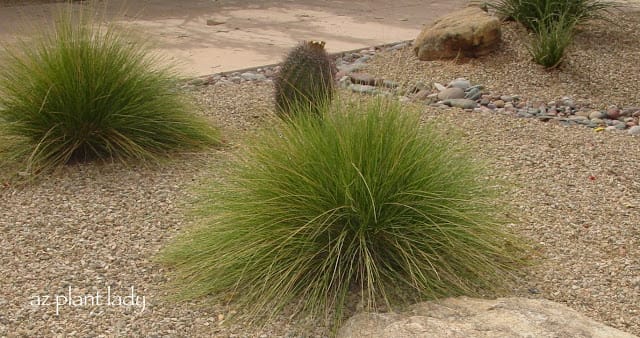
Once fall arrives, they produce lovely, burgundy plumes…

In winter, the plumes will fade and become straw colored, which adds a nice touch of wintery color.
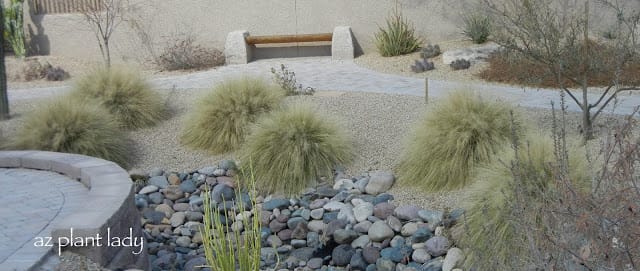
The Pink Muhly grasses, below, weren’t pruned the right way either.
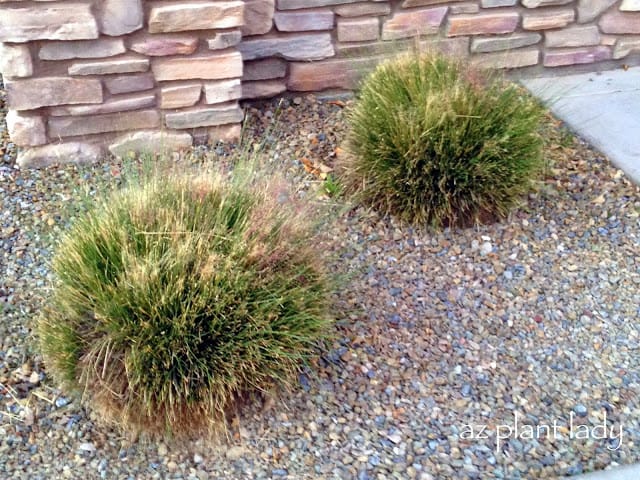
They resemble rounded balls and weren’t cut back enough. But, they look much better than the mini Christmas tree-shaped ones. Don’t you think?
I love these grasses and have planted them in many areas, including along golf courses, churches, and other common areas. And, I just recently planted them in my backyard around my flagstone seating area.
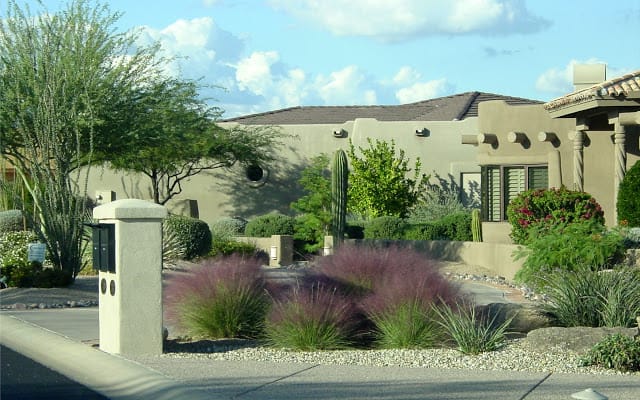


Photo: Roses Feeling The Heat , My Abraham Darby shrub rose and my little dog, Tobey.
If you live in a hot arid climate, chances are that your roses are feeling the heat and aren’t looking their best right now. While gardeners in cooler climates celebrate summer with beautiful rose blooms, the opposite is true for those of us who live in the desert.
Surprisingly, roses actually grow quite well in hot, southwestern zones, and even though mine look somewhat sunburned – I’m not worried because this is normal. Understanding proper irrigation makes a big difference, but roses feeling heat will still have concerns.
You see, roses that are grown in the low desert regions, don’t like the intense sun and heat that summer brings. As a result, the flowers become smaller, and the petals burn in the sun and turn crispy. By July, you are unlikely to see any new roses appearing until Fall.
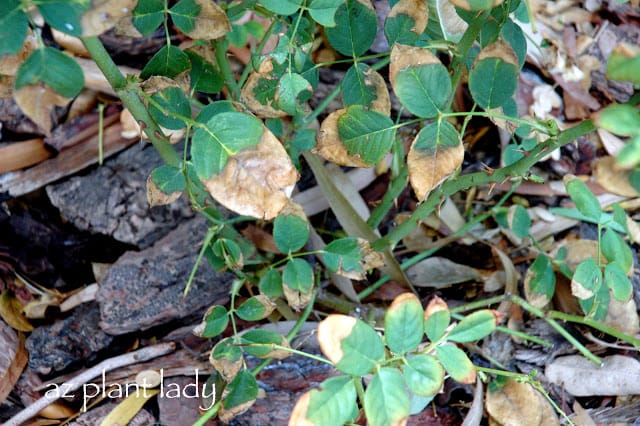
The rose blooms aren’t the only parts of the roses feeling heat concerns in summer – the leaves can become sunburn.
The sight of brown crispy petals and leaves may make you want to prune them away, but don’t.
Why?
Pruning will stimulate new growth that will be even more susceptible to sunburn damage. Second, the older branches and leaves will help to shade the growth underneath the sun.
I know that it is very hard not to prune away the brown leaves – I feel you. However, in September, pull out your pruning shears and prune back your rose bushes by 1/3. This removes the sun-damaged flowers and leaves and stimulates new growth.
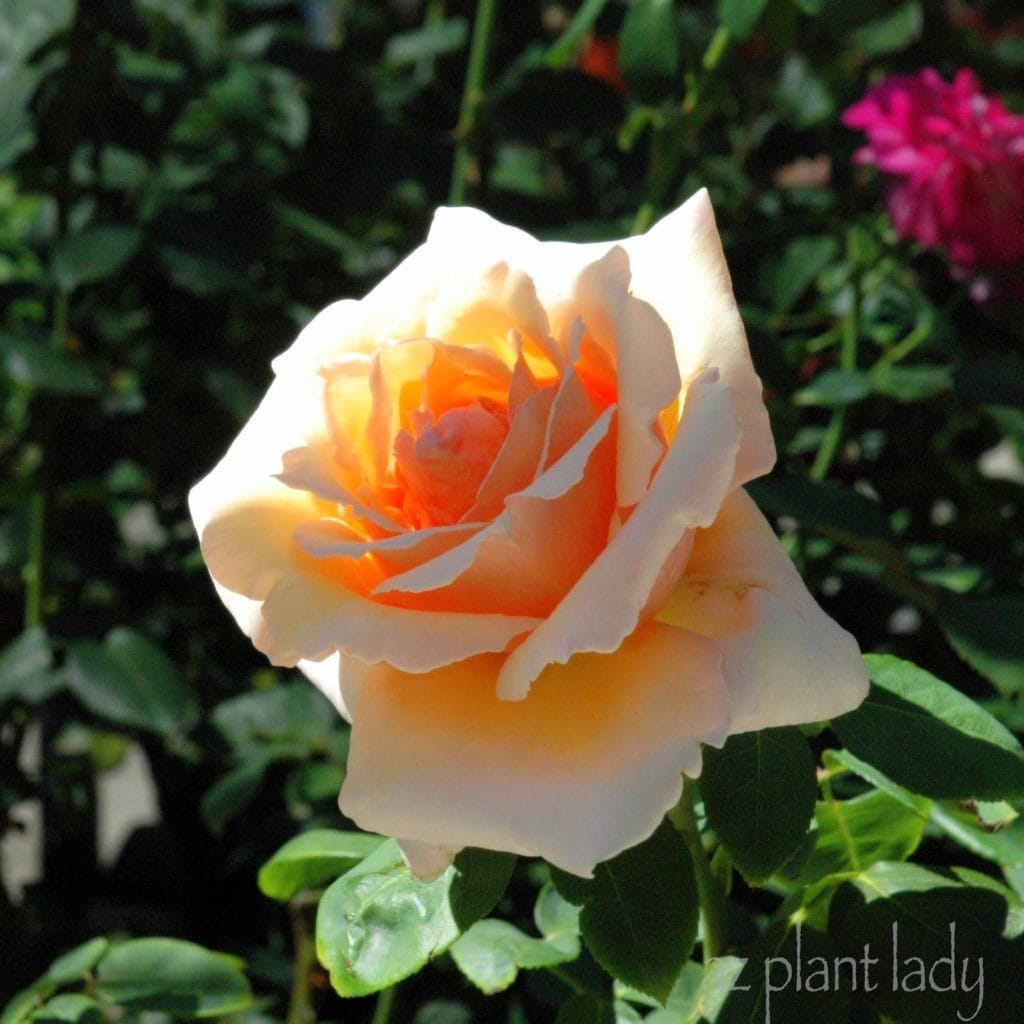
If you lament the less-than-stellar appearance of your summer roses feeling heat, and think it’s easier to grow roses in other climates, you would be wrong.
Oh, certainly, we have to deal with our roses not looking great in the summer. But, compare that with gardeners in other regions who have to deal with the dreaded Japanese beetle that shows up every summer and eats their roses. Or, people who live in more humid climates and are having to deal with severe cases of blackspot or powdery mildew (white spots on the leaves).
Lastly – we are fortunate to enjoy two separate bloom seasons for our roses. In fall, when many other gardeners are putting their roses to bed for the winter, ours are getting ready to bloom a second time that year.
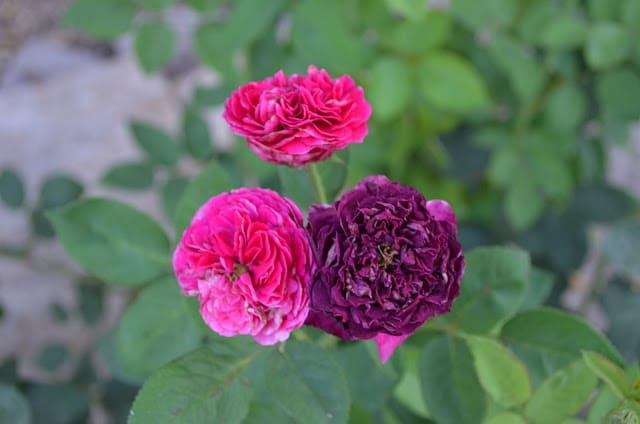
And so, I will ignore my less than beautiful roses this summer, because I know that they will look fantastic this fall It is that simple 🙂
Two New Roses Find a Home in a Desert Garden

Let’s face it, a winter landscape filled with frost-damaged plants isn’t the most attractive. During this time of year, I often find myself itching to grab my pruners and get rid of the ugly, brown growth on my bougainvillea, lantanas, and yellow bell shrubs. But before I do, I keep repeating to myself, just a few more weeks…
Perhaps you have a similar urge to prune away all the brown too early. What helps me to stop grabbing my pruners is remembering that the dead outer growth of my summer-flowering beauties is protecting the inner part of the plant AND the fact that freezing temperatures are still a distinct possibility.
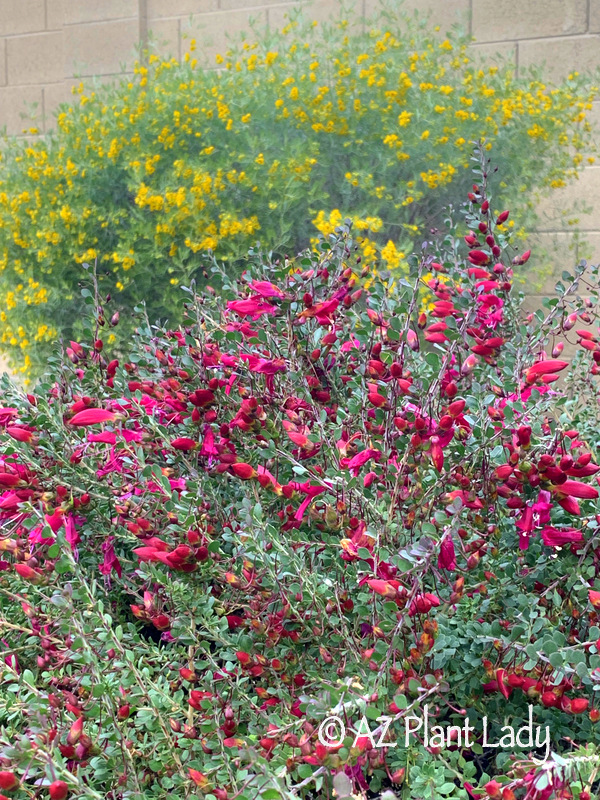
Frost-Damaged Plants, Just a Few More Weeks (Feathery cassia and Valentine bush)
And so, I will focus my attention on the winter-flowering plants that are adding beauty to my cool-season garden for now. If you don’t have any, I recommend Blue Bells (Eremophila hygrophana), Valentine bush (Eremophila maculata ‘Valentine’), and Firecracker penstemon (Penstemon eatoni), and feathery cassia (Senna artemisioides).
If you would like more information on this subject, I invite you to read “Got Brown Crispy Plants?”
So, what are you dying to prune back in your winter garden?

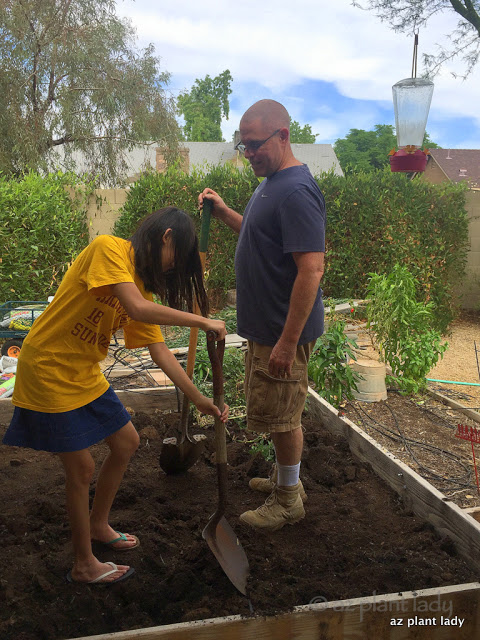
September Gardening Tasks
After a seemingly endless summer, we have finally made it to the finish line. This is the season where we experience a ‘second spring’ and venture out into the garden again.
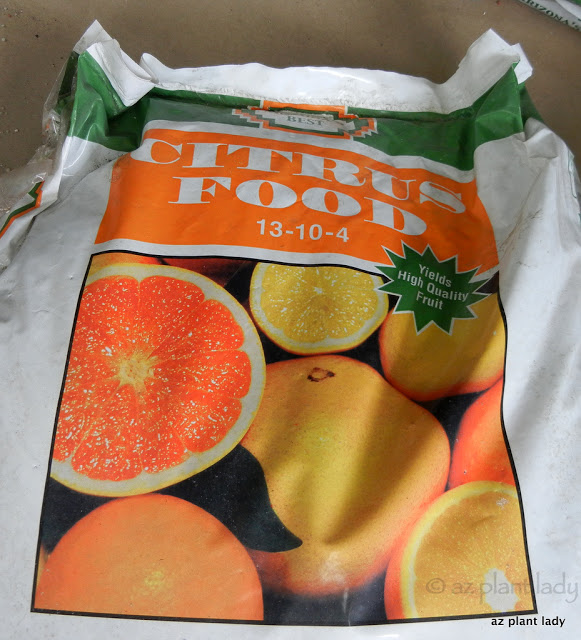
Soil is ready to be amended, citrus fertilized, and some light pruning can be done.
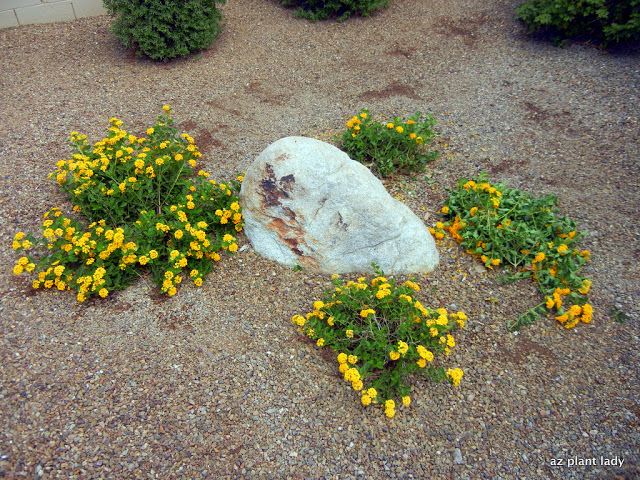
September Gardening Tasks, Un-pruned lantana on the left. Two light pruned lantana are to the right with a pile of clippings.
September is the gateway to a busy time in the garden, but there are a few things that it is still too early to start on yet.
I’ve made a video of what you should do and shouldn’t do this month:
What is your favorite season of the year?
Easy Garden Project: Create a Hummingbird Haven in a Container

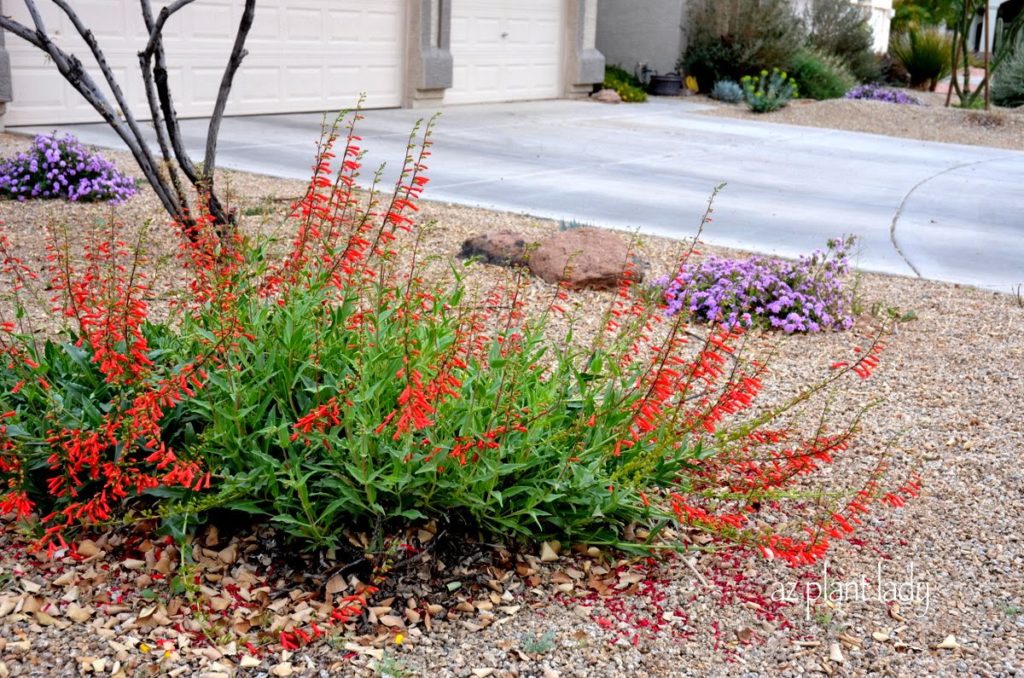
signs of our warm winter
While much of the country is suffering from a truly awful winter season, those of us who live in the Southwest are having the exact opposite problem.
This has been a very warm winter season, with the exception of a few freezing nights back in December.
With temps 10 – 15 degrees above normal, we have been enjoying temps in the ’70s.
I have seen some signs of our warm winter including the fact that I have ditched my slippers and am going barefoot every chance I get. Plants have begun to emerge from their winter dormancy and people are asking me if they can prune their frost-damaged plants early.
In regards to the pruning question, there is still a chance of Southwestern residents getting a spell of freezing weather before we approach the average last frost date. So, pruning too early can actually hurt your plants if by some miracle temps dip below 32 degrees.
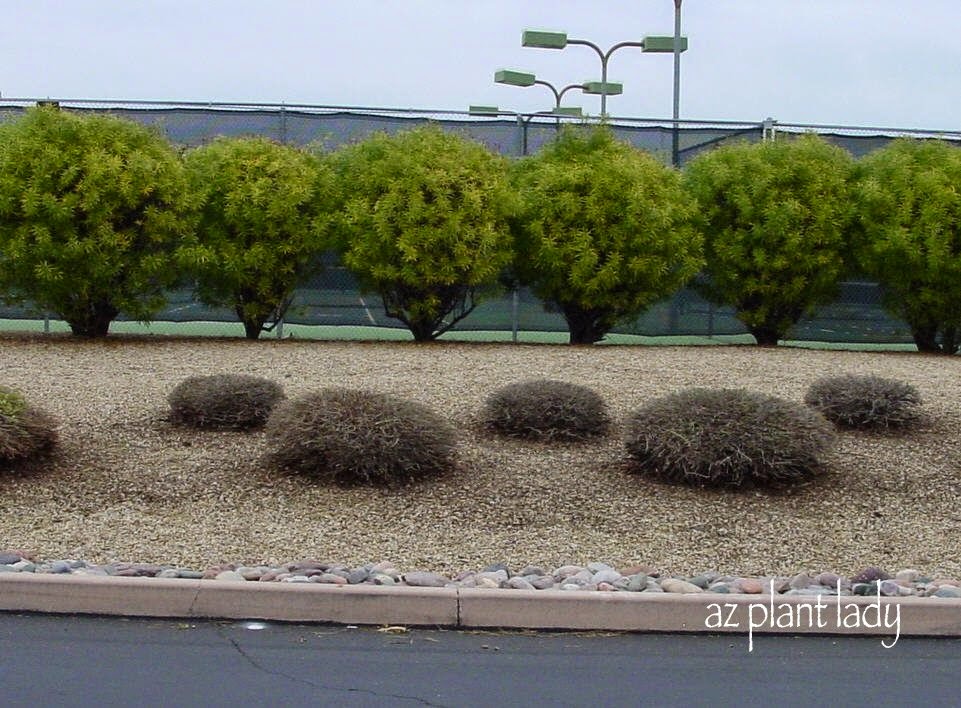
But, that may not stop everyone from grabbing the pruners. If you happen to be one of these impatient pruners, make sure that you cover your recently pruned plants if temps dip into the low 30s.
In the meantime, enjoy the glorious weather!
Trying New Things In My Winter Garden: ‘White Icicle’ Radishes & Swiss Chard

Have you ever had a ‘substitute’ teacher? As most of you know, a substitute teacher doesn’t do things the same way our regular teacher does.
A few years ago, I was asked to step in as a ‘substitute’ gardener for my father-in-law’s landscape.
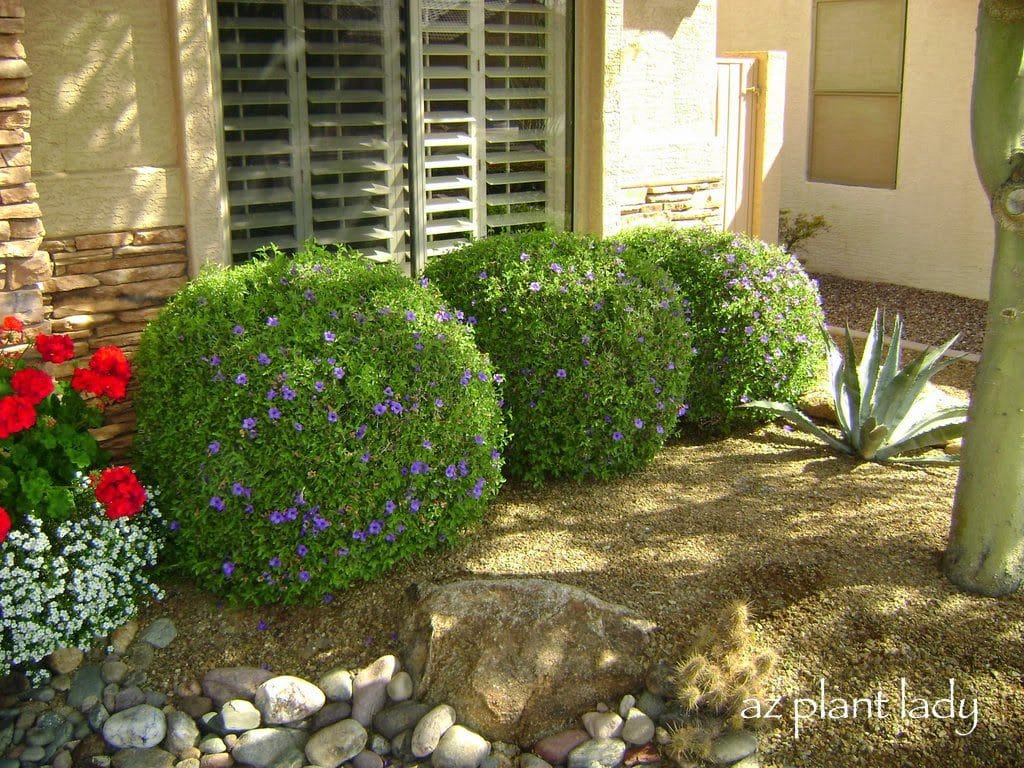
Photo: Meticulously pruned desert ruellia (Ruellia peninsularis)
My father-in-law had always been a meticulous gardener and took a lot of pride in his landscape. Have you ever seen rounder shrubs?
A few years earlier, I had designed the landscape around his new home and tried to convince him to allow his plants to grow into their natural shapes. But as you can see from the photo above, he didn’t follow my advice.
He eventually took out his backyard grass and replaced it with artificial turf and whenever flowers or leaves would fall on the grass, he would vacuum them up – I’m not kidding.
We would often joke with each other about our very different styles of gardening – especially when he would come over to my house for a visit and see my plants growing “wild and free” as he would say.
But despite our differences, we shared the same love for plants and the garden.
Unfortunately, his gardening days were numbered and he asked me to come over and help him with the gardening tasks that he could no longer do.
My father-in-law was diagnosed with ALS (Lou Gehrig’s disease) in October 2010 and it progressed very rapidly.
So, I became his ‘substitute gardener’ and I was happy to be able to help out so that he could still enjoy the beauty of his garden, even if he could not care for it himself.
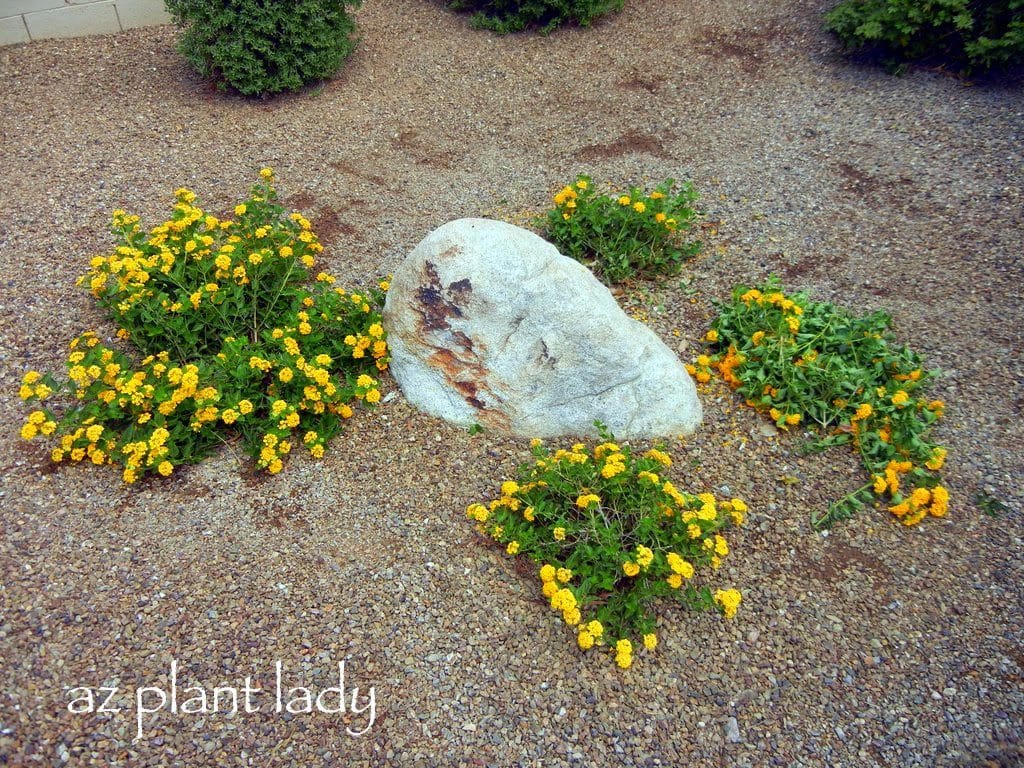
In early August of 2011, I lightly pruned back his gold lantana. At this point, my father-in-law spent most of his time indoors sitting down. But, as I was pruning, I saw him slowly make his way out, with his walker, so he could watch me prune his plants.
At this point, he could no longer talk due to ALS and I’m certain that if he could have spoken, he might have asked me to make the lantana ’rounder’.
After this light pruning, the lantana would grow back to its original size before stopping during winter. If they had not been pruned, they would have look quite overgrown for my father-in-law’s taste.
Light pruning involves removing 1/3 or less. The timing of this light pruning is crucial – prune too late and your plants will be extra susceptible to damage from frost. Don’t prune after early August in zone 9 (July in zone 8) gardens. Pruning in fall should not be done for this very reason.
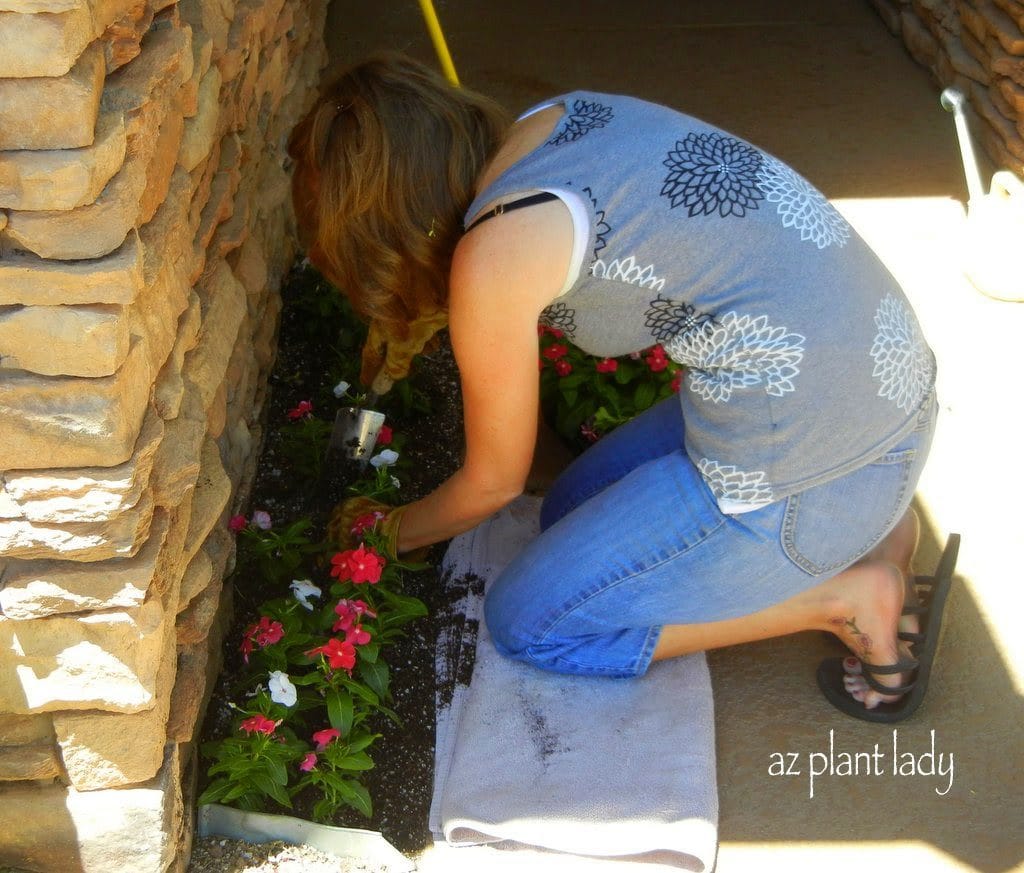
Substitute Gardener
Another part of the garden that my father-in-law took a lot of pride in was his flowering annuals. Every year, he would plant the same red geraniums and white-flowering bacopa in winter. Once spring rolled around, he would plant red and white vinca. He never deviated by trying out newer colors or varieties.
I found myself taking over this job as well and when I came home and see all there was to do in my neglected garden – I didn’t mind. It felt so good to be able to control how his garden looked because ALS had taken control of everything else.
My father-in-law died in September 2011, just 11 months after being diagnosed with ALS.
It’s been almost 3 years since he passed away, but whenever August comes around and I find myself lightly pruning back my gold lantana – I enjoy the memory of one our last moments together in the garden as I pruned his lantana.
Pruning Flowering Shrubs in Late Summer

Yesterday, I asked you on my Facebook page, what was blooming in your garden right now?
March is a glorious time in the desert garden and also time for some needed garden maintenance.
We don’t have a landscaper, so we gather our kids together for a day of yard work each spring.
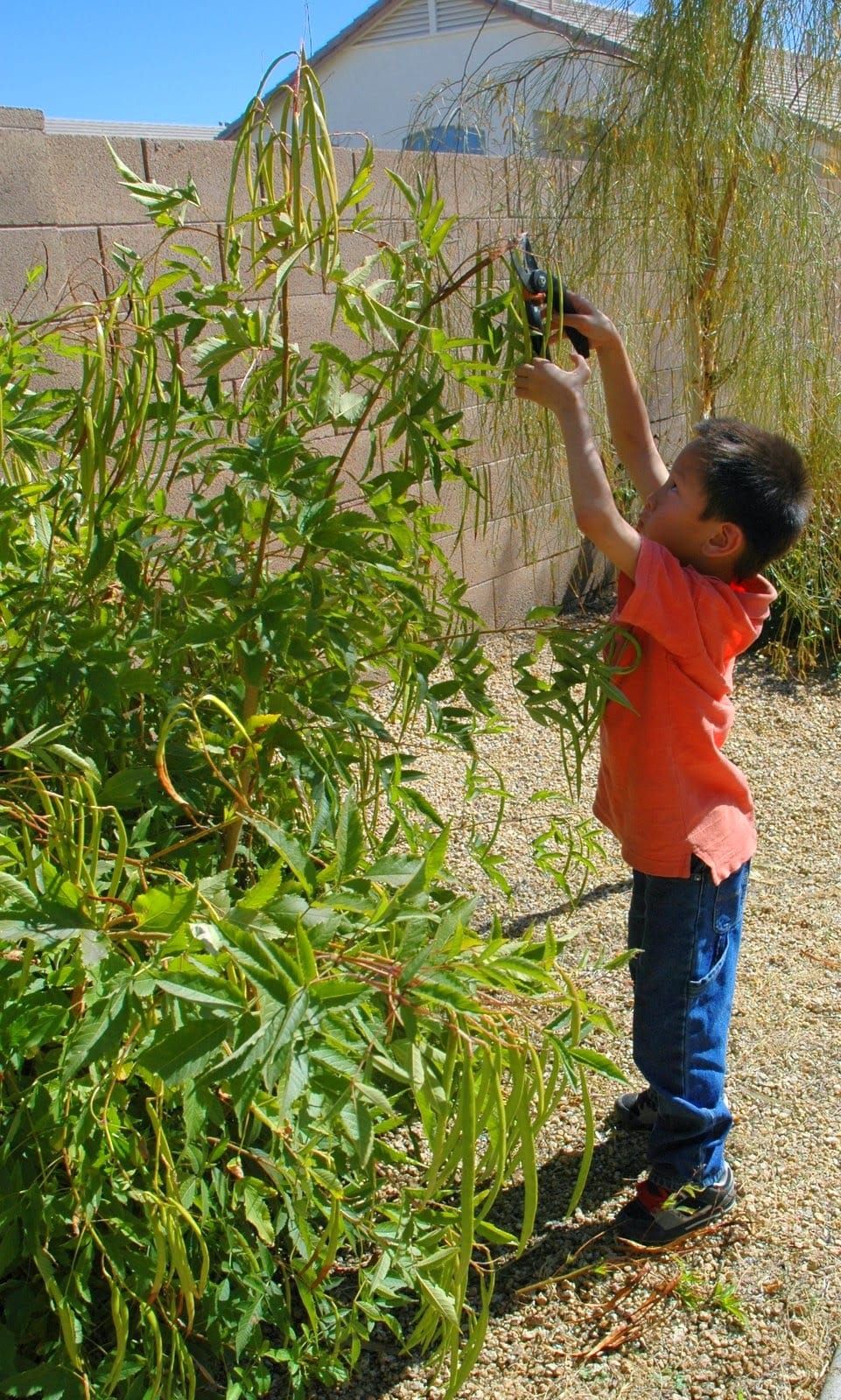
My son helping me prune several years ago.
I can’t honestly say that working out in the garden is my kids favorite activity. But, if you promise them their favorite dinner and dessert afterward, they usually don’t complain.
I started teaching them at a young age how to prune shrubs, using hand pruners. My son is a lot taller then when this photo was taken.
Normally, I do the pruning using loppers and hand pruners. The kids then carry the branches into a large pile on the driveway to be picked up later.
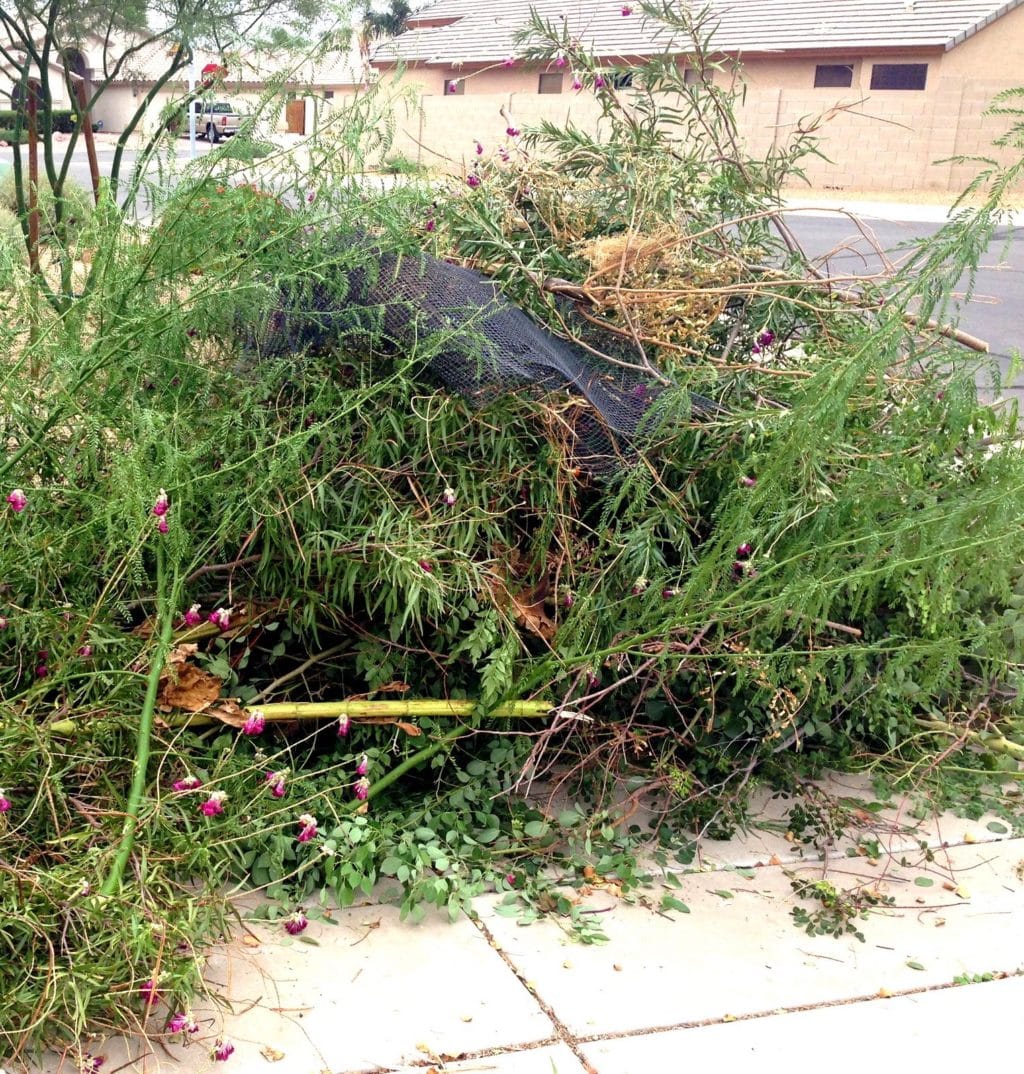
Branches and clippings from the late summer’s pruning.
Once the danger of frost is passed, it is time to prune away all frost-damaged growth and see what else may need pruning.
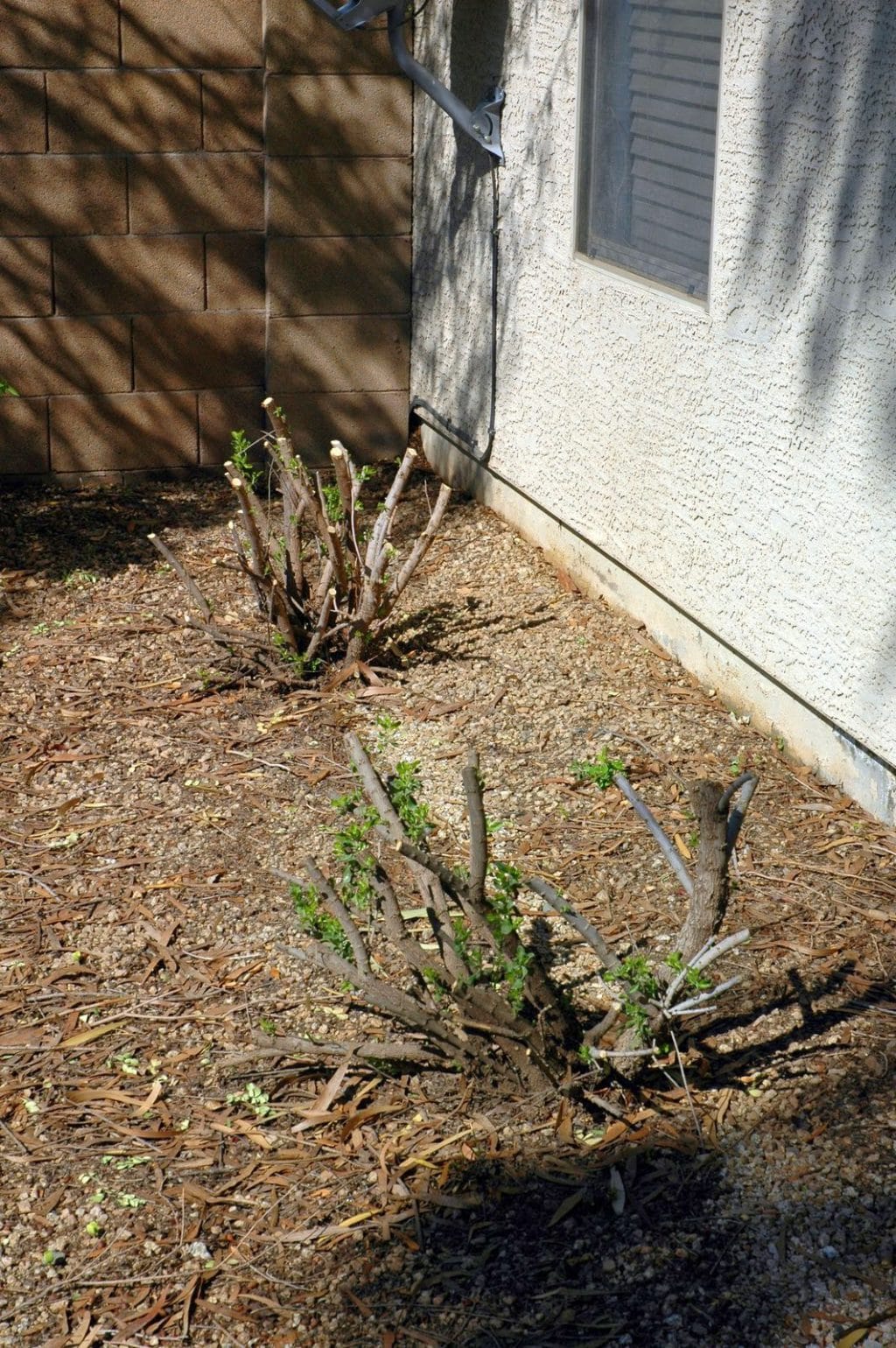
Pruning Spring Garden
Every few years, I prune my Texas Sage shrubs back severely. This rejuvenates them and stimulates the formation of new branches and gets rid of old, woody unproductive branches.
I allow them to grow out naturally after pruning. Of course, you can lightly shape them using hand pruners, if desired.
For more information on pruning flowering shrubs, click here.
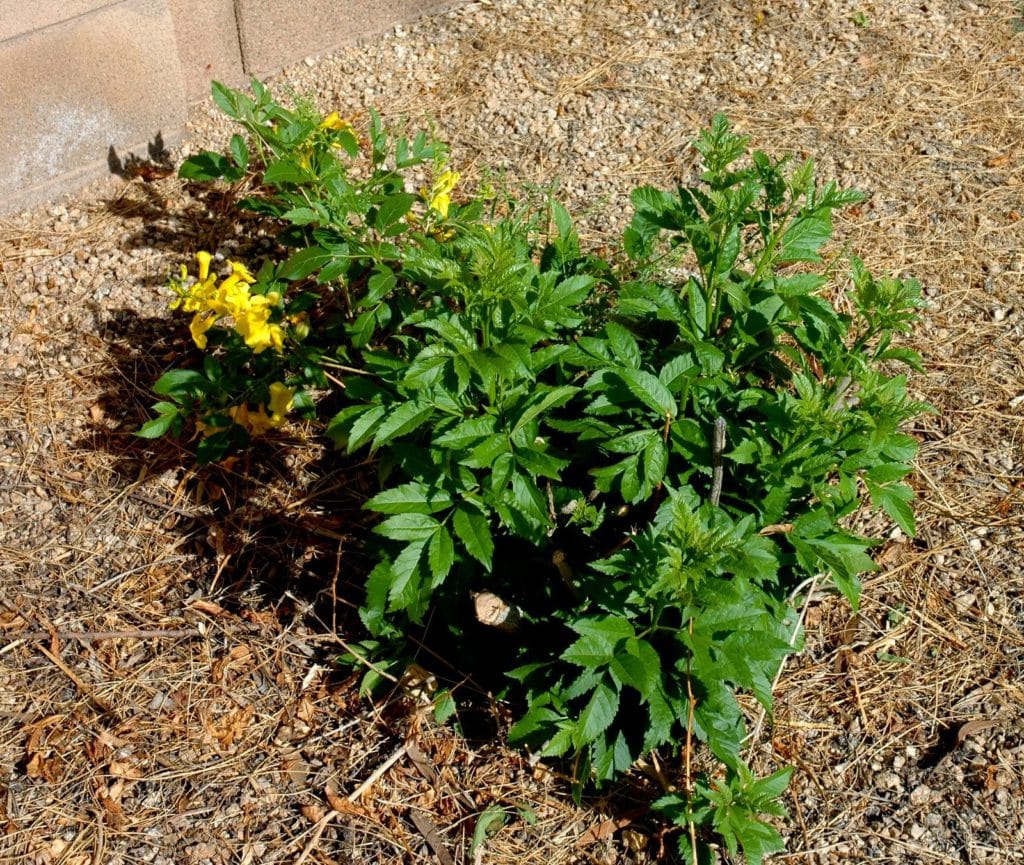
Pruning Spring Garden
A few years ago, my Yellow Bells shrub died back to the ground during a severe frost. I pruned back all of the frost-damaged growth and it soon grew back.
While most of the day was spent pruning, I did take some time to walk around and take pictures of what is currently blooming.
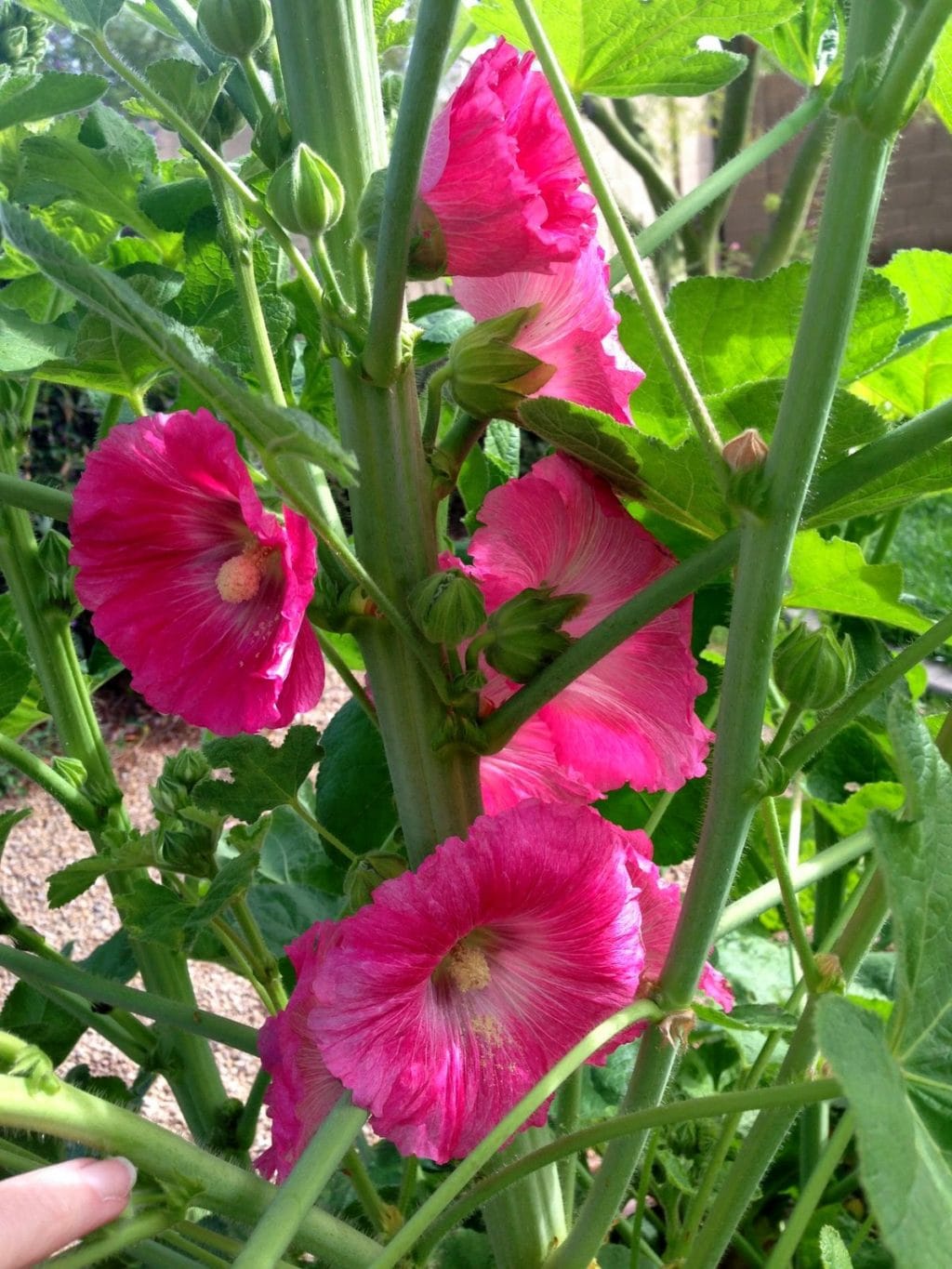
I love my Hollyhocks. This old-fashioned flower can grow in most climates and mine self-seed each year, giving me new plants!
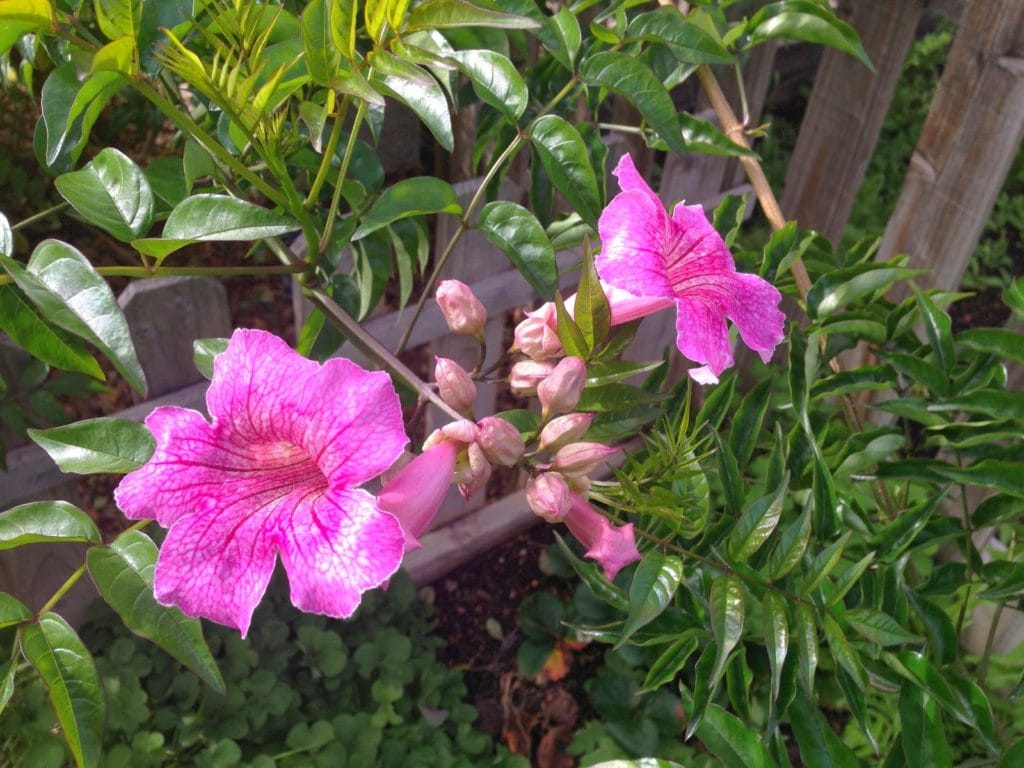
Normally this time of year, I am pruning away the frost damage from my Pink Trumpet Vines. But, this year we had very little frost, so they are already flowering.
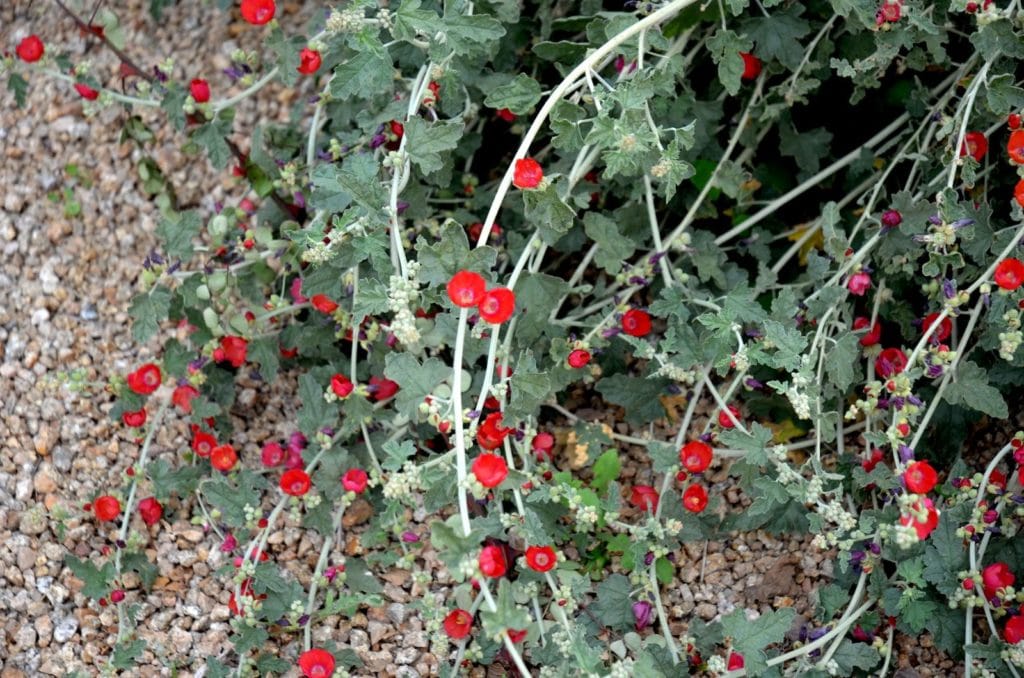
I have several colors of Globe Mallow growing in my garden. I will soon be pruning them back severely once it has finished flowering. Pruning keeps them from looking straggly and also helps keep too many seeds from coming up later.
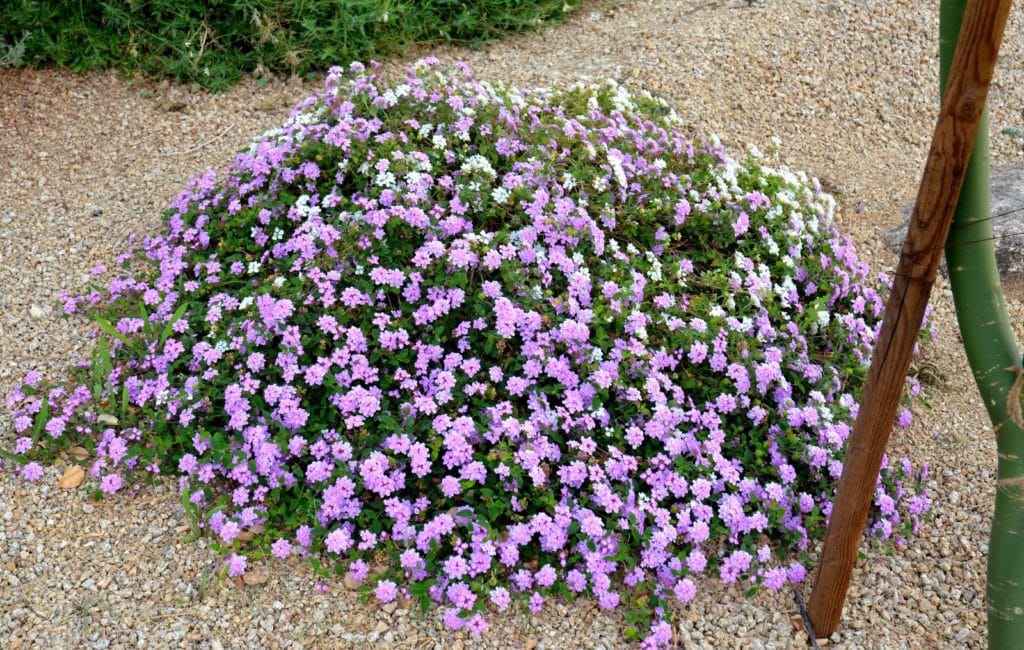
Like my Pink Trumpet Vine, my Purple and White Trailing Lantana did not get hit with much frost. So, they look beautiful right now. Normally, I prune them back to 6″ in March.
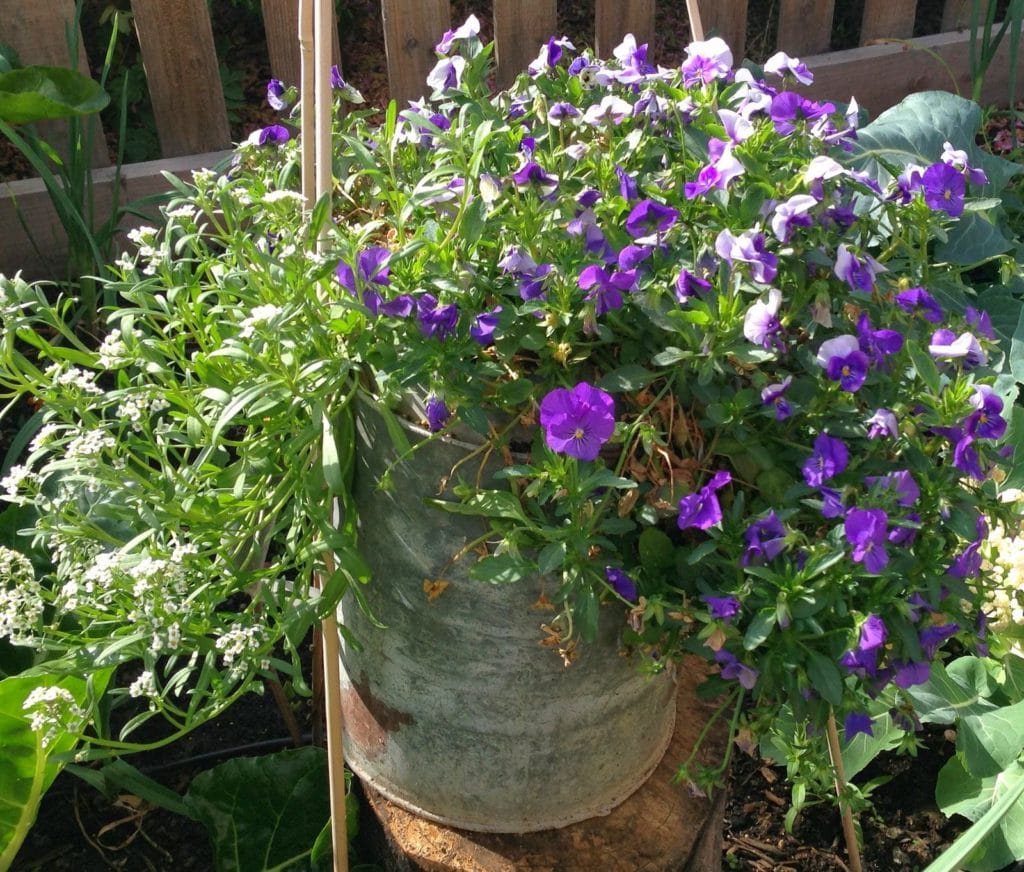
The alyssum and violas are still happily blooming away in their old, rusted watering can. In about a month, they will start to die once the temperatures begin to rise.
I leave my watering can empty in the summer because it gets too hot and other plants won’t survive if planted in it.
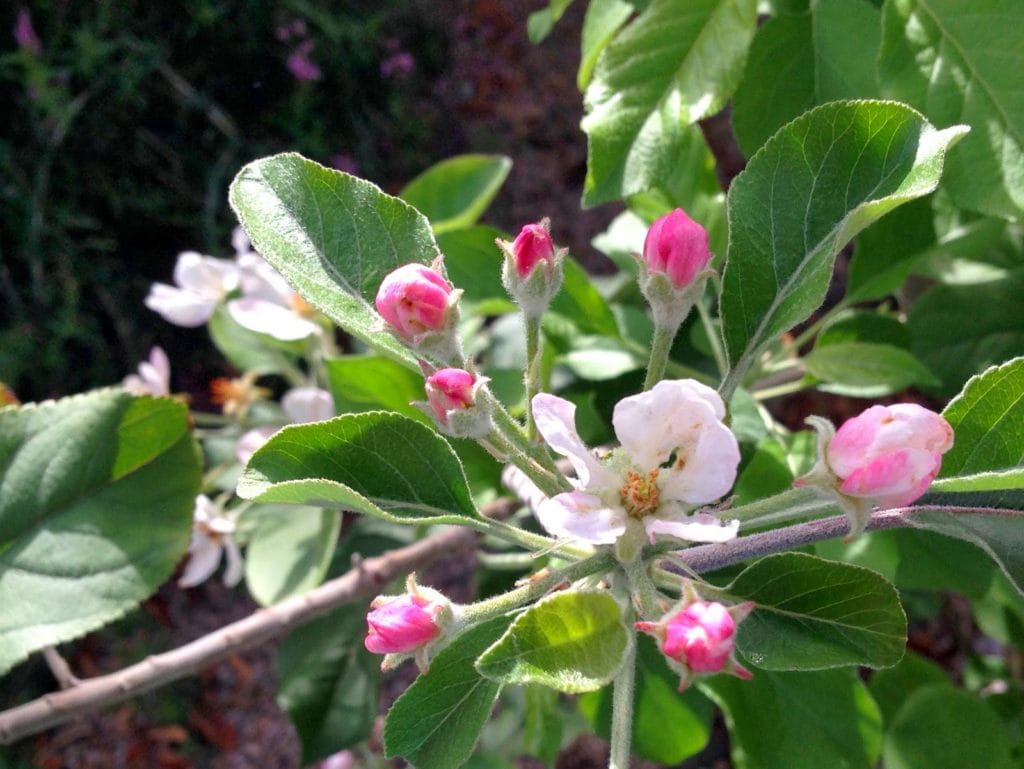
My young apple trees are in bloom. It takes a few years after planting for apple trees to produce apples. We planted the trees last winter and I don’t really expect to see the blossoms turn into apples, but secretly I am hopeful!
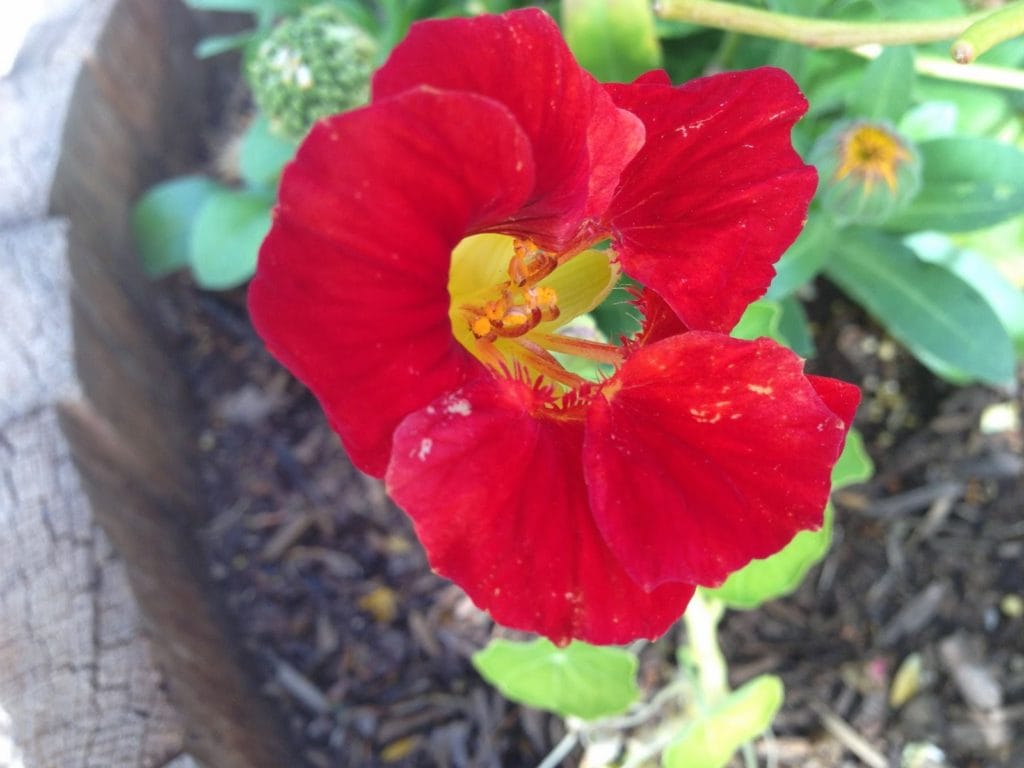
This is the first year that I have planted ‘Cherry Red’ nasturtiums. I love their vibrant, red color!
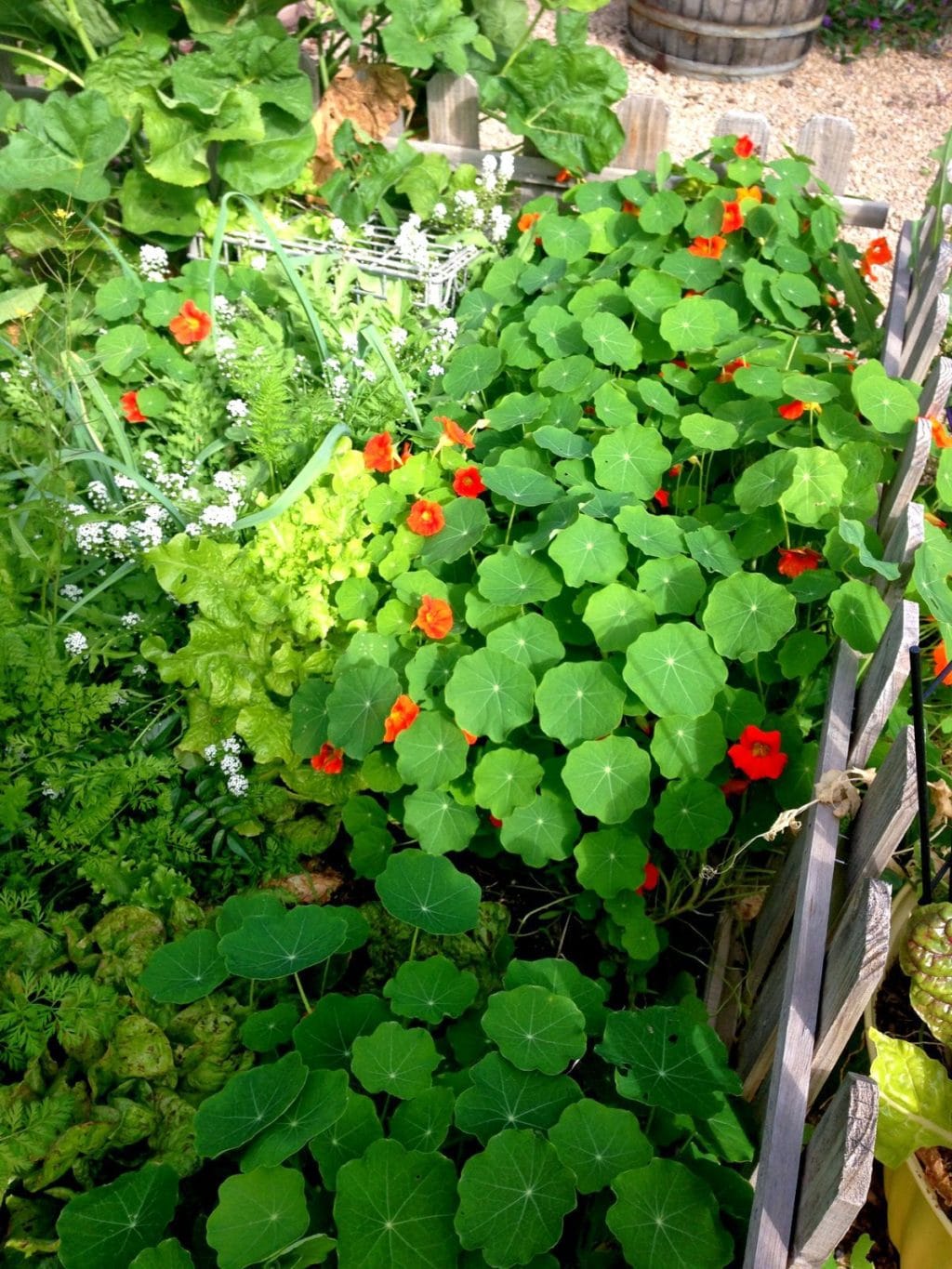
My vegetable garden is in transition this month. Cool-season vegetables such as leaf lettuce, carrots and radishes are still growing. I have planted warm-season vegetables such as bush beans, gourds and cucumbers already.
The garlic will soon be ready to harvest.
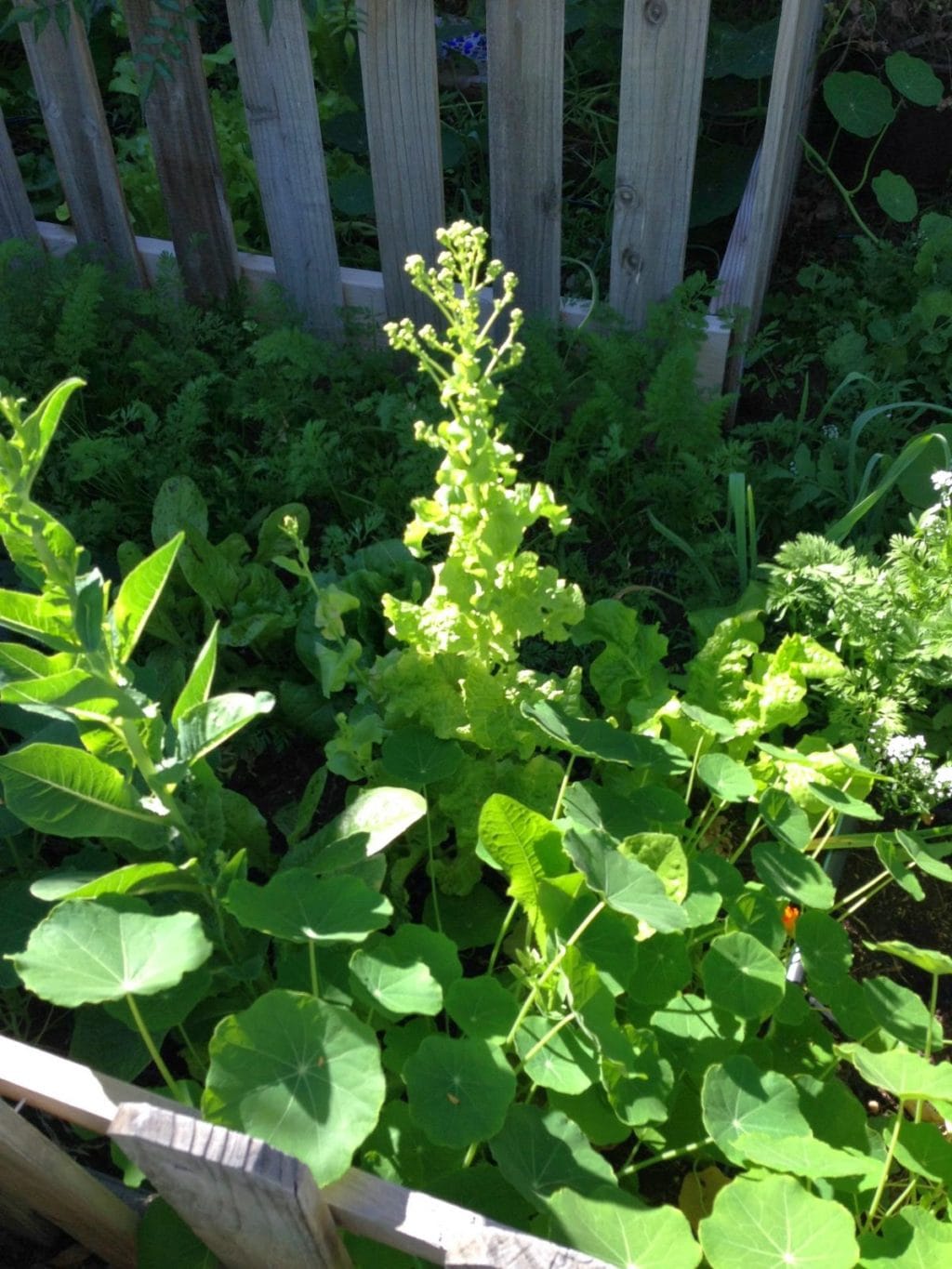
Some of the leaf lettuce planted last fall has begun to ‘bolt’, but I have younger leaf lettuce still available to eat.
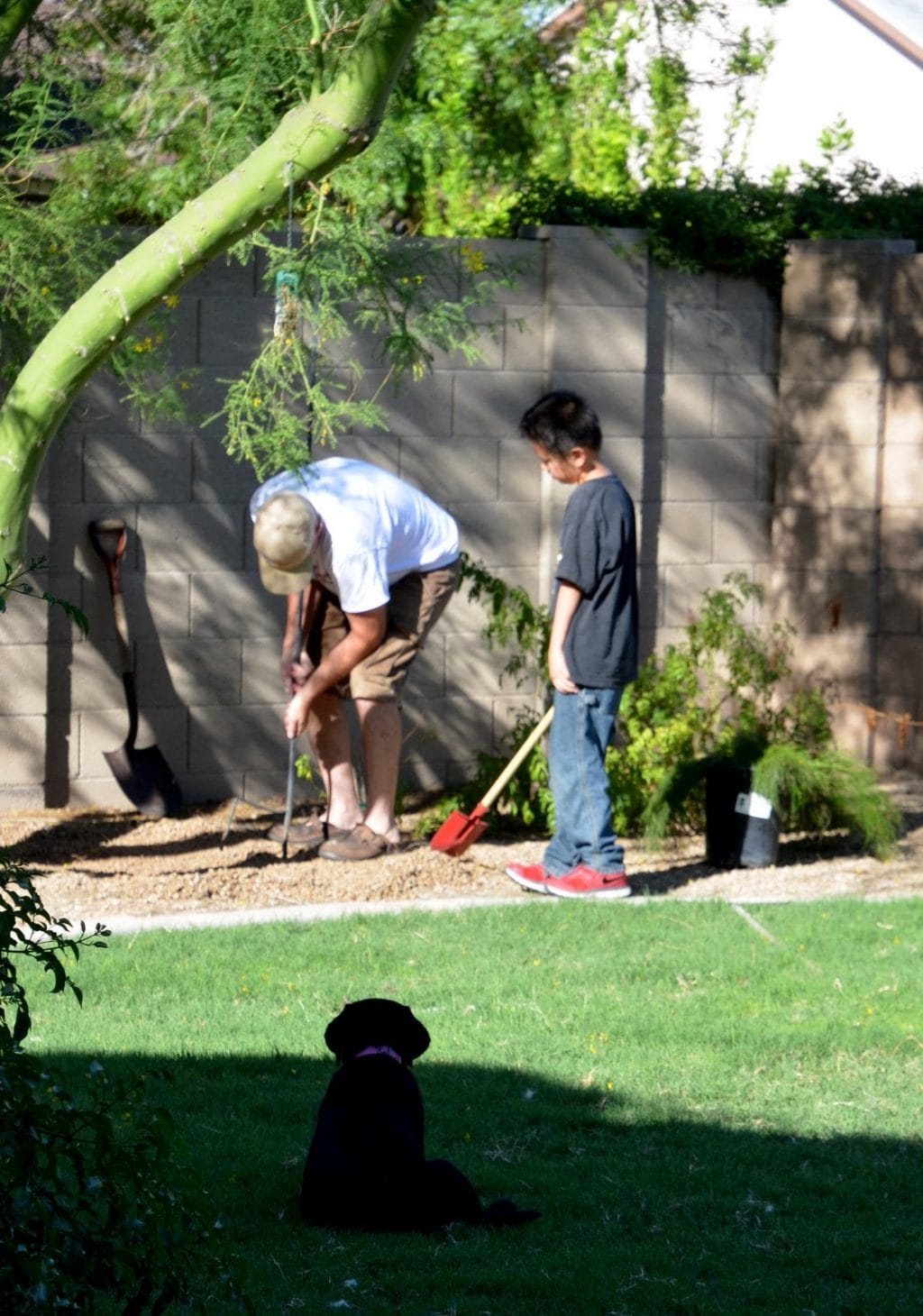
Fall is the best time to add new plants to the garden, but spring is the second-best time.
My husband and son are always so nice about planting things for me.
*You can see our puppy ‘Penny’ sitting in the shade watching them. She is now 8 months old and we just love her! I’ll post an updated picture of her soon.
I will most likely have more for them to plant after I visit the Desert Botanical Garden’s plant sale this weekend (March 13 & 14th)
Well, this has been a small snapshot of what is going on in my garden.
What is happening in yours?

I promise not to sell or share your email with anyone ever!
*Please note that I cannot answer individual gardening questions.
*As an Amazon Associate I earn from qualifying purchases.
| Cookie | Duration | Description |
|---|---|---|
| cookielawinfo-checkbox-analytics | 11 months | This cookie is set by GDPR Cookie Consent plugin. The cookie is used to store the user consent for the cookies in the category "Analytics". |
| cookielawinfo-checkbox-functional | 11 months | The cookie is set by GDPR cookie consent to record the user consent for the cookies in the category "Functional". |
| cookielawinfo-checkbox-necessary | 11 months | This cookie is set by GDPR Cookie Consent plugin. The cookies is used to store the user consent for the cookies in the category "Necessary". |
| cookielawinfo-checkbox-others | 11 months | This cookie is set by GDPR Cookie Consent plugin. The cookie is used to store the user consent for the cookies in the category "Other. |
| cookielawinfo-checkbox-performance | 11 months | This cookie is set by GDPR Cookie Consent plugin. The cookie is used to store the user consent for the cookies in the category "Performance". |
| viewed_cookie_policy | 11 months | The cookie is set by the GDPR Cookie Consent plugin and is used to store whether or not user has consented to the use of cookies. It does not store any personal data. |
